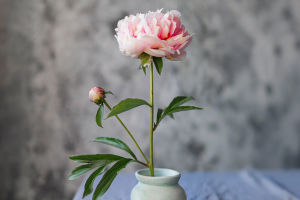We all know the beauty of tulips. These flowers, with their elegant petals and bright colors, are not just simple decorations in gardens—they are a symbol of mystery and allure.
Known as the "magic flower" in Europe, tulips have fascinated gardeners and flower enthusiasts for centuries. But have you ever wondered about the story behind this captivating flower? From their origins to their place in modern culture, tulips have a history filled with surprises.
Origin and Early History
The tulip, scientifically named Tulipa gesneriana, belongs to the Liliaceae family and is one of the most popular flowers around the world. Its origins trace back to the Tianshan Mountains in China, where it likely evolved from species like Tulipa agenensis, Tulipa armena, and Tulipa suaveolens. While the tulip's native roots lie in Asia, it was introduced to Europe in the late 16th century, especially in the Netherlands, which became the global hub for tulip cultivation.
We might be familiar with the Netherlands' tulip fields today, but their initial introduction caused quite a stir, even leading to the infamous "Tulip Mania" in the 17th century. This period saw tulips become so valuable that their bulbs were traded like precious commodities. It's easy to see why tulips were dubbed "magical"—they transformed not only gardens but also the economy of a whole nation.
The Tulip's Rise to Fame
As tulips became more widespread, they gained a reputation for their mysterious beauty and ability to flourish in various climates. By the 17th century, they were already an essential part of European culture. The Netherlands, known for its tulip fields, went on to adopt the tulip as its national flower. The country's cool, temperate climate, with its distinct seasons, makes it an ideal place for these flowers to thrive. However, tulips' flowering seasons vary depending on the geographical latitude, typically blooming from late March to early May.
While over 2,000 varieties of tulips exist worldwide, only about 150 are cultivated in mass production today. These flowers come in various shapes and sizes, ranging from simple to double petals, and can be found in colors like white, pink, red, purple, and even orange. The vast variety of tulip species ensures that there's a type for every gardener's preference.
Characteristics of Tulips
Tulips are perennial herbaceous plants, with bulbs that are typically flattened, cone-shaped, or oval, measuring about 2 cm in diameter. The bulbs are protected by a brownish fibrous skin and have a characteristic yellowish membrane on the outer layer. Their leaves are smooth and often coated with a thin layer of white powder, which helps protect them from environmental elements.
The flowers themselves are a sight to behold. A tulip typically grows between 6-10 cm tall, with a single large flower sitting at the top of the stem. The flower’s colors vary from soft yellows to deep reds, with some varieties featuring intricate patterns and spots on their petals. The tulip’s bloom is known for its distinct cup-like shape, although it can also appear in forms like a bell or bowl. The flower usually grows between 35-55 cm in height, adding a graceful touch to any garden.
The Tulip’s Global Influence
Tulips are not confined to Europe; they have spread to various parts of the world, becoming a symbol of beauty and elegance in many cultures. Countries like Taiwan and Turkey grow tulips to decorate public spaces, and their vibrant blooms are often featured in festivals and local traditions. Interestingly, the tulip also holds significance in the design of the national flag and coat of arms of that region, reflecting its cultural importance.
Aside from their aesthetic appeal, tulips have also become a part of symbolic art and design. In some cultures, they represent love, beauty, and even eternal life. In Turkey, tulips are associated with the Ottoman Empire, symbolizing the connection between the imperial family and the flower. This rich cultural heritage only adds to the tulip's enduring charm.
Practical Growing Tips for Tulips
For those of us who wish to bring the magic of tulips into our own gardens, there are a few key tips to keep in mind. Tulips prefer well-drained soil and full sunlight. They should be planted in the fall, a few inches deep, to give the bulbs enough time to establish roots before the cold winter sets in. Tulips are relatively low-maintenance, but ensuring they get plenty of water during their growing season will help them bloom to their full potential.
While tulips are hardy flowers, they do require some care, especially when it comes to protecting them from pests like aphids and slugs. Regularly checking the bulbs and removing any dead leaves will help maintain a healthy garden and ensure a beautiful spring bloom.
The Timeless Appeal of Tulips
In conclusion, tulips are more than just flowers—they are a symbol of beauty, culture, and nature’s incredible diversity. With their fascinating history and stunning range of colors, tulips continue to capture our hearts and imaginations. Planting these beautiful blooms in your garden could bring a sense of elegance and charm that is hard to match.
Ready to add a touch of magic to your own space with tulips? Share with us how you’re planning to incorporate them into your garden!
We hope this article has inspired you to explore the wonders of tulips. Enjoy the process of planting and watching them bloom, Lykkers!


